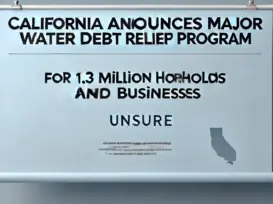Grus Home Energy - wastewater debt relief
Addressing Wastewater Debt Relief: Ensuring Access to Clean Water for All
Access to clean water is a fundamental human right, yet many communities around the world struggle to afford the cost of wastewater services. As a result, households often accumulate wastewater debt, leading to disconnections and potential health risks. In response to this pressing issue, governments, utilities, and organizations are exploring innovative solutions to provide wastewater debt relief and ensure access to clean water for all.
One of the main challenges in addressing wastewater debt is the high cost of infrastructure maintenance and operation. Wastewater treatment facilities require significant investment in equipment, personnel, and maintenance to function effectively. As a result, utility bills for wastewater services can be prohibitively expensive for low-income households, leading to unpaid bills and accumulating debt.
In some cases, households may face disconnections or restricted access to wastewater services due to unpaid bills. This can have serious consequences for public health and environmental quality, as untreated wastewater can contaminate water sources and pose risks to human health. Disconnections also disproportionately impact marginalized communities, exacerbating existing inequalities in access to clean water.
To address these challenges, governments and utilities are implementing various strategies to provide wastewater debt relief and ensure access to clean water for all. One approach is the establishment of affordability programs that offer discounts, payment plans, or subsidies to low-income households. These programs aim to reduce the financial burden of wastewater services and prevent households from accumulating debt.
Another strategy is the implementation of customer assistance programs that provide financial counseling, budgeting assistance, and other support services to help households manage their wastewater bills. These programs aim to address the root causes of wastewater debt, such as financial instability or lack of financial literacy, and empower households to make informed decisions about their water use and payments.
In addition to these initiatives, some communities are exploring alternative financing mechanisms, such as public-private partnerships or innovative financing models, to fund wastewater infrastructure projects and reduce the cost of services for customers. These approaches can help to lower the overall cost of wastewater services and make them more affordable for all households, regardless of income level.
Overall, addressing wastewater debt relief requires a multi-faceted approach that involves collaboration between governments, utilities, and community organizations. By implementing affordability programs, customer assistance initiatives, and alternative financing mechanisms, stakeholders can work together to ensure access to clean water for all and promote sustainable water management practices. Ultimately, by prioritizing wastewater debt relief, we can uphold the fundamental human right to clean water and create healthier, more equitable communities for future generations.
©2025 All Rights Reserved. Grus IoT Co.,Ltd.
